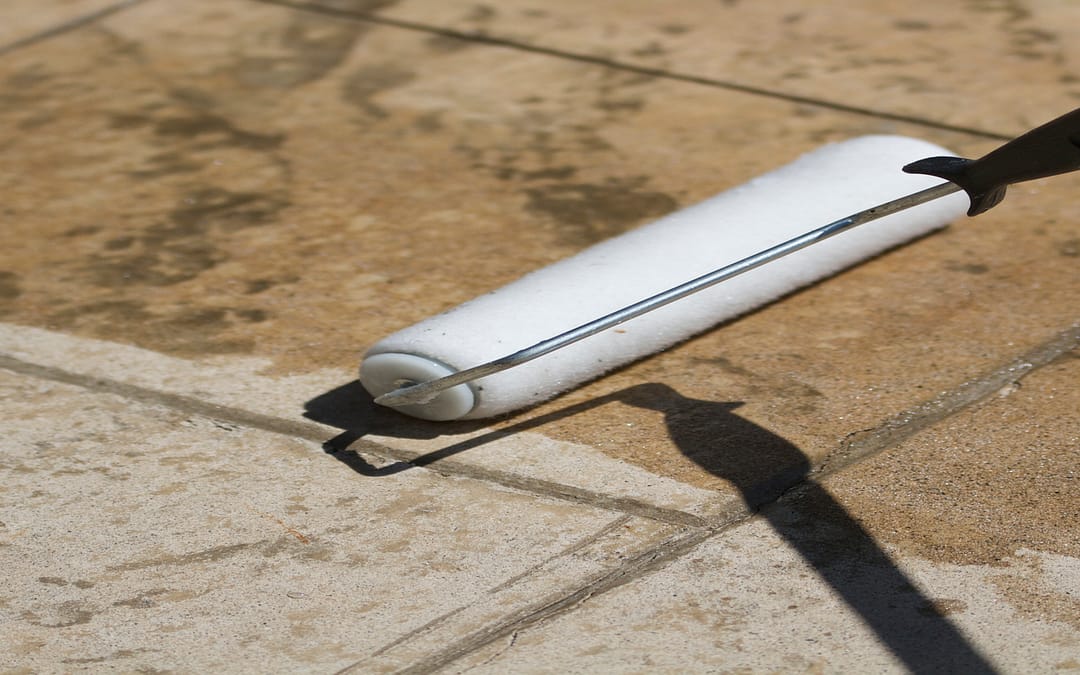The guidelines for staining concrete typically remain the same for most situations, the staining itself can be a relatively painless process once you know what you’re doing. How difficult the application is will depend on the circumstances of the project, like the environmental influences or the dimensions of the surface in question.
It’s always best to follow the manufacturer’s directions rather than sticking with one way of staining, even if each manufacturer uses a similar step-by-step process. The reason for this is primarily because concrete stain varies in composition. This post will cover the basics when it comes to staining concrete.
Water-Based Stain Vs. Acid-Based Stain
Stain comes in two different compositions: water-based and acid-based. The main difference between water-based concrete stain and acid-based concrete stain is that acid stains require cleaning and neutralizing and therefore a longer wait time before sealing. Water-based stains, however, are not typically used with concrete that’s been polished.
Whether you use water-based or acid-based stain, you should still end up with similar-looking results (and you can use them in similar environments). Just be sure to use a protective sealer for longevity and appearance.
Is Stain or Paint Better for My Concrete?
This answer depends on what you’re hoping to accomplish with your surface. Concrete stains become absorbed by concrete, allowing for the porous nature of concrete to continue its natural exposure to the elements. Concrete coating or paint, however, blocks the surface pores. This prevents the natural concrete “breathing” of the surface.
If you’re looking for the visual appeal of bold colors for branding or comfort purposes, most concrete paint coats work great for indoor applications. In other words, if you’re working on a residential project, paint is a more home-friendly choice. However, with the clogging of concrete pores comes the trapping of moisture and a quicker degradation of the surface.
Stain is the better option if you’re looking for a long-term answer in high-traffic situations in which the environment can change or spills are common. So, for example, if your client is running a machine shop or a warehouse, then stain is probably the better choice.
Tips for Applying Your Stain & Using a Concrete Stain Sprayer
Once you’ve appropriately prepped the surface, you’ll want to choose a stain that is UV stable and won’t fade from sun exposure. Then note the following:
- New concrete should cure for 30 days prior to stain application
- Painter’s tape is an easy way to avoid excess stains on walls or over other surfaces
- Don’t forget to test the stain prior to full application
- Previous concrete sealer must be completely removed prior to stain application
Ready to get started? Equip the sprayer with the proper nozzle for consistency and then spray lightly in a circular motion to allow for even coverage and to prevent pooling. Applying the stain in hard-to-reach areas or tight corners may require a handheld brush or paint roller. Once fully applied, using a paint roller to cover the coat can smoothen the surface appearance and provide a more uniform finish.
Runyon Surface Prep & Endurable Concrete Stain
At Runyon, we provide an extensive catalog of concrete surface prep equipment, tools, and accessories. We offer Endurable concrete stain products as well as concrete sealer, gloss, and cleaners. Other brands include Prosoco, Ameripolish, and L&M. Runyon equipment is also available for rent or purchase.
We strive to build genuine relationships with our partners and clients, making ourselves available at the drop of a hat for new products, personalized orders, and spare parts. Let us know how we can support your project? Connect with us online or give us a call.
